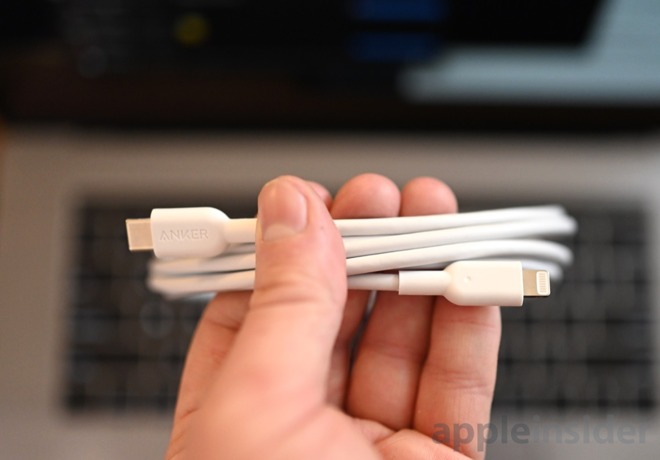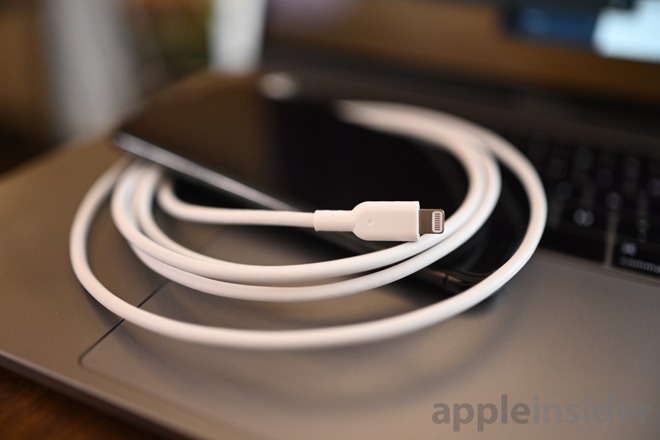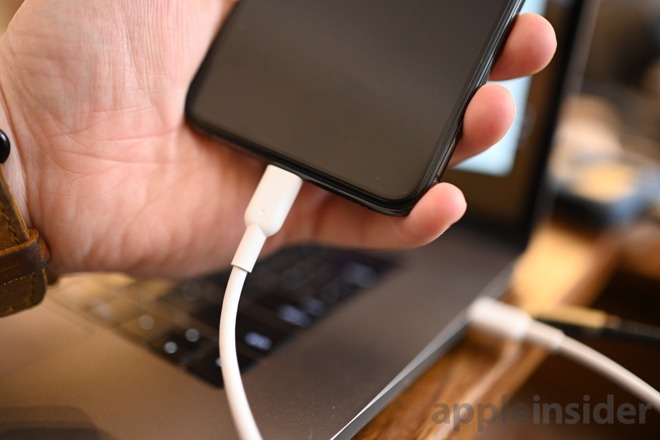Review: Anker Powerline II USB-C Lightning cable is cheaper and more durable than Apple's
Apple has finally opened the floodgates on third-party USB-C to Lightning cables, and the first one we tested -- the Anker Powerline II USB-C to Lightning cable -- is not just less expensive than Apple's, but also more durable.

Anker Powerline II USB-C to Lightning cable
During the 2019 Consumer Electronics Show, we saw the regular suspects announce their versions of USB-C Lightning cables. Apple finally opened up the specification to third-parties towards the tail-end of 2018 and manufacturers have been eager to bring them to market ever since.
USB-C Lightning cables require a different Lightning connector than USB-A versions due to the higher amount of power that is transferred, which has delayed the manufacturing process. To date, all third-parties wanting to bring their cables to market have been waiting for Apple to start shipping them components. That has finally started to happen as cables start becoming available to order.
The fact that Apple is just now making these components available really draws concern to the uncertified USB-C Lightning cables that have been floating around on the likes of eBay or Amazon. This is all the more reason to grab a certified cable, of which there will soon be many.
One of the first -- if not the first -- to hit the market is Anker. They announced preorders of their USB-C Lightning cable recently and we finally got our hands on it.

Anker Powerline II USB-C to Lightning cable
It is a no-frills cable with a USB type-C connector on one end and a Lightning connector on the other. It has larger over-molds than Apple's cable, providing additional durability and a better gripping surface for removal, resulting in a longer lifespan.
The cable itself is slightly thicker than Apple's thanks to its reinforced interior. It has 12-AWG wiring with aluminum shielding and TPE insulation on the outside. In lab tests, Anker says this cable was able to withstand 12,000 bends before breaking.
Best of all, Anker backs the cable with a lifetime warranty.

Anker Powerline II USB-C to Lightning cable
So why is everyone so excited about third-party USB-C Lightning cables? Well, a USB-C Lightning cable an charge your devices far faster than USB-A cables. Recent iPhones can support Fast Charge when using a USB-C cable and a wall adapter that has at least 18W.
There will be many more USB-C Lightning cables to come but Anker's comes at an affordable price, excellent quality, topped off with that warranty. As long as you don't need specific frills such as metal over-molds, nylon wrapping, or other enhancements, this likely will be the first third-party cable available.

Anker Powerline II USB-C to Lightning cable
During the 2019 Consumer Electronics Show, we saw the regular suspects announce their versions of USB-C Lightning cables. Apple finally opened up the specification to third-parties towards the tail-end of 2018 and manufacturers have been eager to bring them to market ever since.
USB-C Lightning cables require a different Lightning connector than USB-A versions due to the higher amount of power that is transferred, which has delayed the manufacturing process. To date, all third-parties wanting to bring their cables to market have been waiting for Apple to start shipping them components. That has finally started to happen as cables start becoming available to order.
The fact that Apple is just now making these components available really draws concern to the uncertified USB-C Lightning cables that have been floating around on the likes of eBay or Amazon. This is all the more reason to grab a certified cable, of which there will soon be many.
One of the first -- if not the first -- to hit the market is Anker. They announced preorders of their USB-C Lightning cable recently and we finally got our hands on it.
A basic, reliable cable
Anker has made a name for itself as being a great quality brand, with excellent customer service, and affordable prices. This cable represents just that.
Anker Powerline II USB-C to Lightning cable
It is a no-frills cable with a USB type-C connector on one end and a Lightning connector on the other. It has larger over-molds than Apple's cable, providing additional durability and a better gripping surface for removal, resulting in a longer lifespan.
The cable itself is slightly thicker than Apple's thanks to its reinforced interior. It has 12-AWG wiring with aluminum shielding and TPE insulation on the outside. In lab tests, Anker says this cable was able to withstand 12,000 bends before breaking.
Best of all, Anker backs the cable with a lifetime warranty.

Anker Powerline II USB-C to Lightning cable
So why is everyone so excited about third-party USB-C Lightning cables? Well, a USB-C Lightning cable an charge your devices far faster than USB-A cables. Recent iPhones can support Fast Charge when using a USB-C cable and a wall adapter that has at least 18W.
There will be many more USB-C Lightning cables to come but Anker's comes at an affordable price, excellent quality, topped off with that warranty. As long as you don't need specific frills such as metal over-molds, nylon wrapping, or other enhancements, this likely will be the first third-party cable available.

Comments
YMMV as always.
Sure sounds to me like YMMV based on use.
The story here is the lifetime warranty.
The question is, will the warranty process go through Amazon, if purchased through Amazon. For example, can I take advantage of Prime 2 day shipping.
If the answer is no, then the hassle of dealing with Anker would be more trouble than it’s worth.
12 AWG isn’t that large but it’s overkill.
FYI: 12.9-inch tablet can use 14.5 volts at 2 amps, which is equivalent to 29 watts
But it's obviously not 12ga just by looking at the pic. The diameter of a given AWG cable is not necessarily indicative of the cable's actual diameter. I've got 12ga cable that's .5" in dia. And getting it was a mistake, LOL.
FYI: '12 AWG = 25 amps.' needs some qualification to make any sense.
Both at home and traveling I'd say we are careful users (nice wrapping prior to placing in our bags, try to route the cables on the bed nicely, etc)
Guess what... EVERY cable over approx 1 year had the cable separated from the stress point... those around a year show the stretched housing prior to the unraveling.
This reminds me of those Apple fanatics that would claim "My Mac has never crashed, ever"... when it was simply self delusion to maintain the religion.
Of course, a "lifetime warranty" mitigates even the worst durability somewhat (depending on what "lifetime" means in context), but it's still more convenient to not replace a cable than it is to replace one.
That's not the conclusion we've drawn, but we have noted that Apple cables usually cost considerably more than third-party equivalents and wondered why we buy them if they don't offer any greater utility or longer life than cheaper alternatives. Usually it's because we have no choice (like USB-C to Lightning cables until just now) or convenience (Apple usually has stock and comparatively quick, easy access).
The remedy is to create a more robust jacket, but that usually results in a cable assembly that's as stiff as a coat hanger. Personally I prefer cables with greater flexibility, even if it means I have to replace them more often.